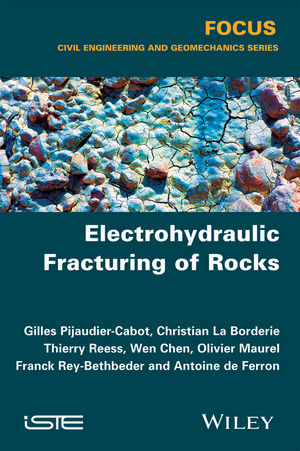
Electrohydraulic Fracturing of Rocks
ISTE Ltd and John Wiley & Sons Inc (Verlag)
978-1-84821-710-2 (ISBN)
Gilles Pijaudier-Cabot is Professor of Civil Engineering at Université de Pau et des Pays de l'Adour. His research interests cover quasi-brittle materials, concrete mechanics, computational failure models and durability mechanics.
Preface vii
Introduction xi
Chapter 1 Experiments in a Representative Environment 1
1.1 Mechanical set-up 1
1.2 Pulsed arc electric generator 4
1.3 Material properties 6
1.4 Measurements of radical permeability 7
1.5 X-ray tomography 9
1.6 Results on model materials 10
1.7 Summary of the results on sandstone 17
1.8 Discussion 18
Chapter 2 Computational Modeling of the Process: Principles 21
2.1 Pressure generated by the pulsed arc electrical discharge 22
2.2 Mechanical modeling of rocks under dynamic loads 29
2.3 Coupled effects between damage and permeability 41
2.4 Summary and conclusions 44
Chapter 3 Validation of the Computational Model 47
3.1 Simulation of the experiments in uniaxial compression 47
3.2 Confined tests on hollow cylinders 52
3.3 Isotropic versus anisotropic permeability 67
3.4 Conclusions 68
Chapter 4 Computations on Representative Reservoir Geometries 71
4.1 Effect of repeated shocks 72
4.2 Simulation on a typical reservoir geometry 75
4.3 Optimization of the process 79
Concluding Remarks and Future Outlook 91
Bibliography 97
Index 103
| Verlagsort | London |
|---|---|
| Sprache | englisch |
| Maße | 155 x 234 mm |
| Gewicht | 200 g |
| Themenwelt | Technik ► Bergbau |
| Technik ► Elektrotechnik / Energietechnik | |
| Technik ► Maschinenbau | |
| ISBN-10 | 1-84821-710-2 / 1848217102 |
| ISBN-13 | 978-1-84821-710-2 / 9781848217102 |
| Zustand | Neuware |
| Haben Sie eine Frage zum Produkt? |
aus dem Bereich


